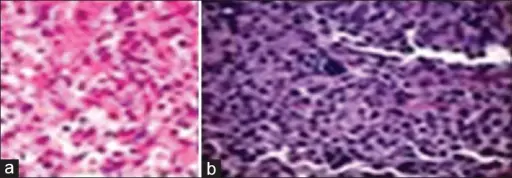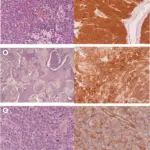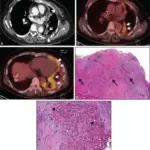An Atypical Rhabdoid /Teratoid Tumor is a rare, fast-growing tumor of the brain and spinal cord. Atypical rhabdoid tumor usually occurs in children aged three years and younger, although it can occur in older children and adults. About half of these tumors form in the cerebellum or brain stem.
What is the Pathology of Atypical Rhabdoid Tumor?
Etiology: The cause of Atypical Rhabdoid /Teratoid Tumor is genetic.
Genes involved: SMARCB1 (also called INI1)con chromosome 22.
Pathogenesis: The sequence of events that lead to Atypical Rhabdoid /Teratoid Tumor occur mostly in the posterior cranial fossa and supratentorial region.
Histology: The histology associated with Atypical Rhabdoid /Teratoid Tumor shows jumbled small and large cells. The tissue of this tumor contains many different types of cells including the rhabdoid cells, large spindled cells, and epithelial and mesenchymal cells, and areas resembling primitive neuroectodermal tumor (PNET).
How does Atypical Rhabdoid Tumor Present?
Patients with Atypical Rhabdoid /Teratoid Tumor are mostly males, aged 3 years or younger. It can, however, occur in adults as well. The symptoms, features, and clinical findings associated with Atypical Rhabdoid /Teratoid Tumor include nausea, vomiting, and headache.
How is Atypical Rhabdoid Tumor Treated?
Atypical Rhabdoid /Teratoid Tumor is treated by surgery.
What is the Prognosis of Atypical Rhabdoid Tumor?
The prognosis of Atypical Rhabdoid /Teratoid Tumor is very poor.



